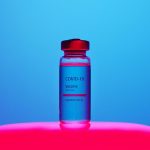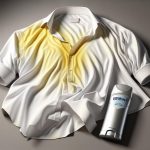As a laundry enthusiast, have you ever wondered why white clothes turn yellow?
It's a common conundrum that many of us face, but the answer lies in a combination of factors that might surprise you.
From the impact of sweat and body oils to the consequences of using too much bleach, understanding these reasons can help us tackle the yellowing mystery and keep our whites looking pristine.
Let's explore the secrets behind this phenomenon and discover effective ways to maintain the brightness of our beloved white garments.
Table of Contents
Key Takeaways
- Sweat, body oils, and detergents contribute to yellowing in white clothes through chemical reactions.
- Bleach and sun exposure can trigger yellow stains on fabrics and weaken fibers.
- Proper washing and storage techniques help prevent fabric breakdown and yellowing over time.
- Stain removal methods and natural remedies are essential for maintaining fabric freshness and preventing yellow discoloration.
Common Causes of Yellowing White Clothes
Yellowing in white clothes often occurs due to a combination of factors such as sweat, body oils, and deodorant stains. However, other elements like the excessive use of detergent, hard water, and bleach can also play a role in causing white clothes to turn yellow. Proper fabric care is essential to maintain the brightness of white garments.
Using too much detergent can leave residue on clothes, which attracts dirt and oils, leading to yellowing. Hard water contains minerals that can build up on fabrics, contributing to discoloration. Bleach, although useful for whitening, can weaken fibers if not used correctly, hastening the yellowing process.
Therefore, understanding the impact of these substances on fabric is crucial. By adopting appropriate fabric care practices, such as using the right amount of detergent, avoiding excessive bleach, and considering water quality, we can help prevent the yellowing of our beloved white clothes.
Impact of Sweat and Body Oils
So, here's the deal – sweat and body oils truly pack a punch when it comes to yellowing our favorite white garments. They contain sneaky compounds that react with the fabric, causing those unsightly stains to show up.
The acidity in these substances can actually break down the fibers in white fabrics, leading to discoloration over time.
Sweat Stains Fabric
When sweat and body oils come into contact with white fabrics, they can lead to yellow stains due to the compounds and oxidation processes involved. Here are three key points to remember about how sweat stains impact fabric:
- Chemical Reaction: Sweat contains compounds that react with the fabric, causing yellowing over time.
- Oxidation: Body oils that penetrate the fabric can oxidize, contributing to the yellow stains on white clothes.
- Bacterial Growth: The combination of sweat and body oils creates an environment where bacteria thrive, leading to discoloration.
To prevent and remove yellowing caused by sweat stains, it's important to follow proper washing and stain removal techniques, especially in areas like underarms and collars where sweat concentration is higher.
Body Oils Discoloration
Body oils from our skin can interact with white fabrics, causing discoloration over time. When body oils, including sebum and sweat, come into contact with white clothing, they can lead to the formation of yellow stains.
The natural oils and salts present in sweat, combined with body oils, create an environment that promotes bacterial growth, further exacerbating the yellowing process. To prevent yellowing, it's essential to regularly wash white clothes to remove sweat and body oils.
If left untreated, body oils and sweat can oxidize on the fabric, making the yellow discoloration more challenging to eliminate. By maintaining good laundry habits and promptly addressing stains, it's possible to keep white garments looking fresh and vibrant.
Chemical Reactions Cause
Chemical reactions between sweat, body oils, and the fabric of white clothes can result in yellow stains developing over time.
Here's how this happens:
- Compounds in sweat and body oils react with fabric fibers: When these compounds come into contact with the fabric, they can trigger a chemical reaction that leads to yellowing.
- Frequent wear without proper washing exacerbates the issue: The longer sweat and body oils linger on the fabric, the more likely they're to cause yellow discoloration.
- Prevention is key: Regularly washing white clothes, especially after they've been exposed to sweat, can help prevent the chemical reactions that lead to yellow stains.
The Role of Detergent in Discoloration
I've noticed that the detergent we choose, the water temperature we use, and our bleach habits all play a significant role in the discoloration of white clothes.
The type of detergent we select can impact how clean our whites stay, while the water temperature during washing can affect how well the detergent rinses out.
Additionally, the consequences of using bleach improperly can lead to unexpected yellowing and damage.
Detergent Type Impact
The choice of detergent significantly influences the discoloration process of white clothes. When it comes to detergents, here's what you should know:
- Some detergents contain ingredients that can react with the fabric over time, leading to yellowing.
- Harsh detergents with strong chemicals can contribute to discoloration of white clothes.
- Opting for a gentle detergent specifically formulated for whites or one without optical brighteners can help prevent yellowing.
Choosing the right detergent plays a crucial role in maintaining the brightness of white clothes. By selecting a detergent that's gentle on fabrics and free from harsh chemicals, you can help keep your whites looking fresh and vibrant for longer.
Water Temperature Effects
To prevent yellowing of white clothes, the water temperature used during washing plays a crucial role in combination with the detergent selected. Hot water is effective in breaking down oils and dirt, preventing yellow stains from forming on white garments.
Detergent works more efficiently in warm or hot water, aiding in the removal of yellowing substances. The synergy between hot water and detergent is essential for thoroughly cleaning white clothes and preventing discoloration.
Proper water temperature selection is key to maintaining the whiteness of clothes and avoiding yellowing. By using the right combination of hot water and detergent, you can ensure that your white clothes stay bright and free from unsightly yellow stains.
Bleach Usage Consequences
Using too much bleach in laundry can accelerate the yellowing process and damage the brightness of white garments. When it comes to bleach usage consequences, it's essential to be mindful of its impact on fabric fibers.
Here's what can happen:
- Weakening of Fabric Fibers: Excessive bleach can weaken the fabric fibers, making them more prone to yellowing over time.
- Residual Bleach Reactions: Residual bleach left on clothes can react with body oils and sweat, leading to yellow discoloration.
- Oxidation and Breakdown: Bleach residues left on garments can oxidize and break down the fabrics, contributing further to the yellowing of white clothing.
Understanding how bleach interacts with fabric fibers is crucial in maintaining the vibrancy of white clothes and preventing unwanted yellowing.
Effects of Hard Water on Whites
Minerals found in hard water can react with detergents and fabrics, causing white clothes to yellow over time. The calcium and magnesium in hard water form insoluble compounds with detergents, reducing their cleaning power and leaving white garments looking dull. Additionally, these minerals can accumulate on fabrics, contributing to the yellow discoloration. The residue left by hard water also makes it difficult to fully rinse out detergents, creating a film on white clothes that attracts dirt and accelerates yellowing.
To combat the effects of hard water on whites, consider using a water softener or adding vinegar to the wash. These remedies can help neutralize the minerals in hard water, preventing them from reacting with detergents and fabrics. By taking steps to address the impact of hard water, you can maintain the brightness and whiteness of your clothes for longer periods.
Bleach's Contribution to Yellowing
Bleach's interaction with body oils, sweat, and minerals in water can lead to the yellowing of white clothes. Here's how bleach contributes to this unwanted effect:
- Chemical Reactions: When bleach comes into contact with body oils, sweat, and minerals present in water, it can trigger chemical reactions that result in yellow stains on white fabrics.
- Oxidization: Residual bleach left on garments can oxidize over time, forming yellow spots on the fabric. This oxidation process can be exacerbated by heat and light, leading to further discoloration.
- Fabric Damage: Bleach has the potential to weaken fabric fibers, making them more susceptible to yellowing and overall damage. Weakened fibers are less able to withstand the rigors of wear and laundering, hastening the yellowing process and compromising the garment's longevity.
Understanding how bleach affects fabric fibers and contributes to yellowing is crucial in maintaining the vibrancy and longevity of white clothing items.
Sun Exposure and Fabric Discoloration
When it comes to why white clothes turn yellow, sunlight plays a significant role. Exposure to UV rays can speed up the yellowing process, causing fabric fibers to break down and lose their original brightness.
This breakdown of fabric structure under sunlight can ultimately lead to irreversible discoloration, emphasizing the importance of protecting white garments from prolonged sun exposure.
Sunlight Causes Fading
Exposure to sunlight can significantly contribute to the yellowing of white clothes by breaking down the fabric's fibers and causing discoloration over time. To prevent this, it's important to take precautions such as:
- Avoid Direct Sunlight: Hanging white clothes in direct sunlight for extended periods can accelerate the yellowing process.
- Use Sun-Protective Products: Applying fabric protectants or using laundry detergents with UV protection can help shield white garments from the damaging effects of sunlight.
- Store Properly: When not in use, store white clothes in a cool, dark place away from sunlight exposure to maintain their brightness and prevent yellowing.
UV Rays Accelerate Yellowing
UV rays from the sun play a significant role in accelerating the yellowing process of white clothes by breaking down the fabric's fibers. Exposure to UV rays can lead to the discoloration and yellowing of white fabrics over time. The ultraviolet radiation in sunlight contributes to the breakdown of the white dye in the fabric, causing it to turn yellow. Prolonged exposure to UV rays weakens the fabric's structure, making it more prone to yellowing. To protect white clothes from yellowing, it is essential to minimize sun exposure and consider using protective measures like clothing covers or laundry detergents with UV protection.
| UV Rays and Yellowing | Effects on White Fabrics |
|---|---|
| Accelerate yellowing process | Break down fabric fibers |
| Cause discoloration | Weaken fabric structure |
Fabric Breakdown Accelerates
White clothes exposed to sunlight undergo accelerated fabric breakdown, hastening the process of yellowing over time. This breakdown occurs due to the damaging effects of sun exposure on the fabric, particularly white fabrics.
Here are three key points to consider:
- UV Exposure: Sun exposure causes the fabric to weaken, making it more susceptible to fabric breakdown and yellowing.
- White Dye Vulnerability: Prolonged exposure to sunlight weakens the white dye in fabric, leading to discoloration and yellowing.
- Direct Sunlight Impact: Fabrics left in direct sunlight for extended periods are at a higher risk of turning yellow due to the increased intensity of UV rays.
Protecting white clothes from excessive sun exposure can significantly extend their lifespan and maintain their pristine whiteness.
Tips for Preventing Yellowing Whites
To maintain the bright whiteness of your clothes, it's essential to follow these simple yet effective tips for preventing yellowing.
Firstly, ensure you wash white clothes after each use to prevent sweat and dirt buildup, which can lead to yellowing over time. Storing white clothes separately in a clean wardrobe is crucial to avoid contamination and preserve their pristine whiteness.
When it comes to laundry day, always wash white clothes separately from colored items to prevent color transfer and maintain their bright condition. Using hot water as per fabric care instructions is key for thorough cleaning and preventing yellowing.
Lastly, make sure to properly dry white clothes either in a sunny area or using a machine to preserve their whiteness and prevent any unwanted discoloration. By incorporating these tips into your laundry routine, you can keep your whites looking fresh and vibrant for longer.
Importance of Separating White Laundry
Separating white laundry is crucial for maintaining the brightness and quality of your white garments over time. When you separate your white laundry from colored items, you're taking the necessary steps to ensure your whites stay white. Here are three reasons why separating white laundry is essential for preserving the brightness and quality of your white clothes:
- Prevent Color Transfer: Washing white clothes separately helps prevent color transfer from colored garments, which can cause unwanted discoloration on your white items.
- Avoid Yellowing: Separating white laundry is vital in preventing yellowing caused by sweat, body oils, and other contaminants. This practice helps keep your whites looking fresh and clean for longer periods.
- Reduce Risk of Stains: Properly sorting white laundry reduces the risk of stains and discoloration during the washing process. By separating your whites, you can maintain their pristine appearance and extend their lifespan.
Choosing the Right Laundry Detergent
When selecting the appropriate laundry detergent for your white clothes, consider opting for a product specifically designed to maintain their brightness and prevent yellowing. Look for high-quality detergents with optical brighteners that help preserve the whiteness of your garments without harsh chemicals that could contribute to yellowing over time. It's essential to choose a detergent that is gentle on fabrics yet powerful enough to effectively remove stains. By using a detergent tailored to prevent yellowing, you can ensure your whites stay looking crisp and bright wash after wash.
| Features | Benefits | Tips |
|---|---|---|
| Optical Brighteners | Maintain whiteness of clothes | Look for "whites" or "brightening" labels |
| Gentle Formulation | Protect fabric integrity | Opt for detergents suitable for delicate fabrics |
| Stain-Removing Power | Effective removal of stains | Choose a detergent with enzymes for tough stains |
Choosing the right laundry detergent is crucial in the battle against yellowing and maintaining the brilliance of your white wardrobe.
Effective Stain Pretreatment Techniques
For effective stain pretreatment techniques on white clothes, consider utilizing simple household ingredients like baking soda, hydrogen peroxide, lemon juice, vinegar, or commercial stain removers.
To tackle yellow stains effectively, follow these steps:
- Create a paste by mixing equal parts baking soda and water, then apply it to the yellowed areas before washing the garment.
- Make a solution using hydrogen peroxide and water to pre-treat yellow stains on white clothes, ensuring to let it sit for a few minutes before laundering.
- Combine lemon juice and water to form a solution that can be used to pretreat yellowed areas on white garments, allowing it to work its magic before throwing the clothing in the wash.
These techniques can be highly effective in combating yellow discoloration on white clothes, restoring their brightness and freshness. Whether opting for natural remedies or commercial stain removers, proper pretreatment is key to maintaining the pristine appearance of your white wardrobe pieces.
Washing White Clothes in Cold Water
To maintain the brightness and integrity of white clothes, washing them in cold water is a practical and gentle method that helps prevent shrinkage and color fading. Cold water is a friend to white garments; it is gentle on fabrics, reducing the risk of damage while effectively cleaning the clothes. Not only does cold water washing prevent shrinkage, but it also helps preserve the fabric quality, particularly for delicate fabrics with sensitive dyes. Another benefit of using cold water is its energy efficiency compared to hot water washing, making it an environmentally friendly choice. This method is also suitable for preventing color bleeding in white clothes with intricate designs or multiple colors. Below is a table summarizing the advantages of washing white clothes in cold water:
| Advantages | Details |
|---|---|
| Prevents shrinkage | Cold water is gentler on fabrics, reducing the risk of shrinking. |
| Preserves fabric quality | Delicate fabrics benefit from the gentle nature of cold water. |
| Energy-efficient | Cold water washing consumes less energy compared to hot water. |
Proper Storage Practices for White Garments
Storing white garments in a cool, dry space is essential to prevent yellowing caused by environmental factors like nicotine and greasy cooking residue. To keep your white garments pristine, follow these proper storage practices:
- Ensure cleanliness: Wash and dry your white clothes thoroughly before storing them to prevent any stains or dirt from setting in and causing yellowing over time.
- Handle with care: Wash and dry your hands before handling white garments to avoid transferring oils and dirt that can lead to yellowing. Using clean hands will help maintain the garment's freshness.
- Choose the right containers: Opt for storage containers made of acid- and lignin-free materials to prevent reactions with acids that can cause yellow stains. Containers made of cast polypropylene with the #5 or PP symbol are ideal for preserving white garments effectively.
Frequently Asked Questions
How Do You Get Yellow Out of White Clothes?
To get yellow out of white clothes, I apply whitening solutions, oxygen-based bleach, baking soda, or vinegar. I wash them separately, pretreat stains, and avoid overusing bleach. Regular maintenance like rotating clothes helps prevent yellowing.
Why Do Stored White Clothes Turn Yellow?
When stored, white clothes turn yellow due to oxidation, exposure to air, lack of ventilation, and light in storage spaces. Fabric breakdown, residue stains, and humidity fluctuations contribute. Proper cleaning, storage conditions, and using white vinegar can help prevent yellowing.
How Do You Get White Clothes White Again?
To get white clothes white again, I use whitening solutions, oxygen-based bleach for soaking, and baking soda in the wash. Adding vinegar helps brighten and deodorize. Follow care labels for best results. It's crucial to restore whites effectively!
Why Does My Skin Turn White Clothes Yellow?
Wearing white clothes causes yellowing due to skin oils and sweat. These substances react with fabric dyes, exacerbating discoloration. Regular washing and proper care are crucial in preventing yellow stains from accumulating on white garments.
- The Use of Nonwovens in Construction and Civil Engineering - July 11, 2025
- The Use of Nonwovens in Construction and Civil Engineering - July 11, 2025
- The Use of Nonwovens in Construction and Civil Engineering - July 11, 2025







